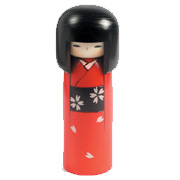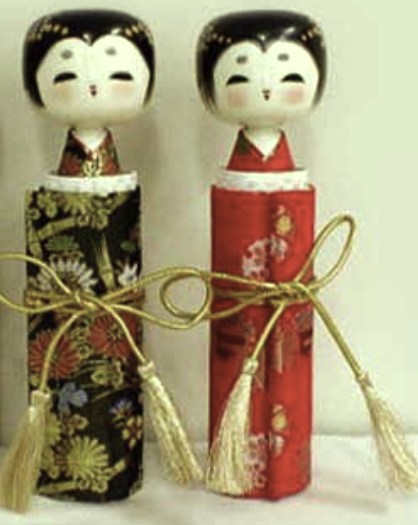Kokeshi dolls appeared in the Edo period (1600-1868). They are handmade wooden Japanese Kokeshi Japanese Themed toys that were initially loved by children of peasant farmers in the Tohiku region of northern Japan. The dolls were often sold as a good fortune miyage (souvenir) to those visiting hot springs in the northeastern parts of the country. Today, Kokeshi dolls are popular with toy collectors and continue to provide souvenirs for tourists visiting hot springs in Japan.
Kokeshi doll heads have been painted by master craftsmen who define facial features using a few thin, simple lines. Doll bodies are often painted using bright, contrasting colors such as red, black, and yellow, then hand decorated with symbolic representations of nature, including plants, vines, flowers, birds, animals, butterflies, clouds and other abstract, traditional or culturally significant designs.

Paper Kokeshi dolls and mask molds are designed for parents and teachers who are more interested in practically teaching children all kinds of concrete crafts to improve their cognitive, reasoning skills, so they can truly discover how and why things work.
Traditional Kokeshi dolls have an oversized head, cylindrical body without arms or legs. Creative Kokeshi dolls come in a wide variety of shapes, sizes and colors. Kokeshi dolls often appear female in a traditional kimono dress.
Sayonara dolls are popular variations of the Kokeshi dolls. They gave wood peg doll which is similar to kokeshi dolls, but they have a cylindrical body attached to a piece of fabric or paper to put gift or special messages to the recipient. The traditional material for the message is a roll of Washi paper wrapping and silk fabric the Sayonara doll to create a kimono.
